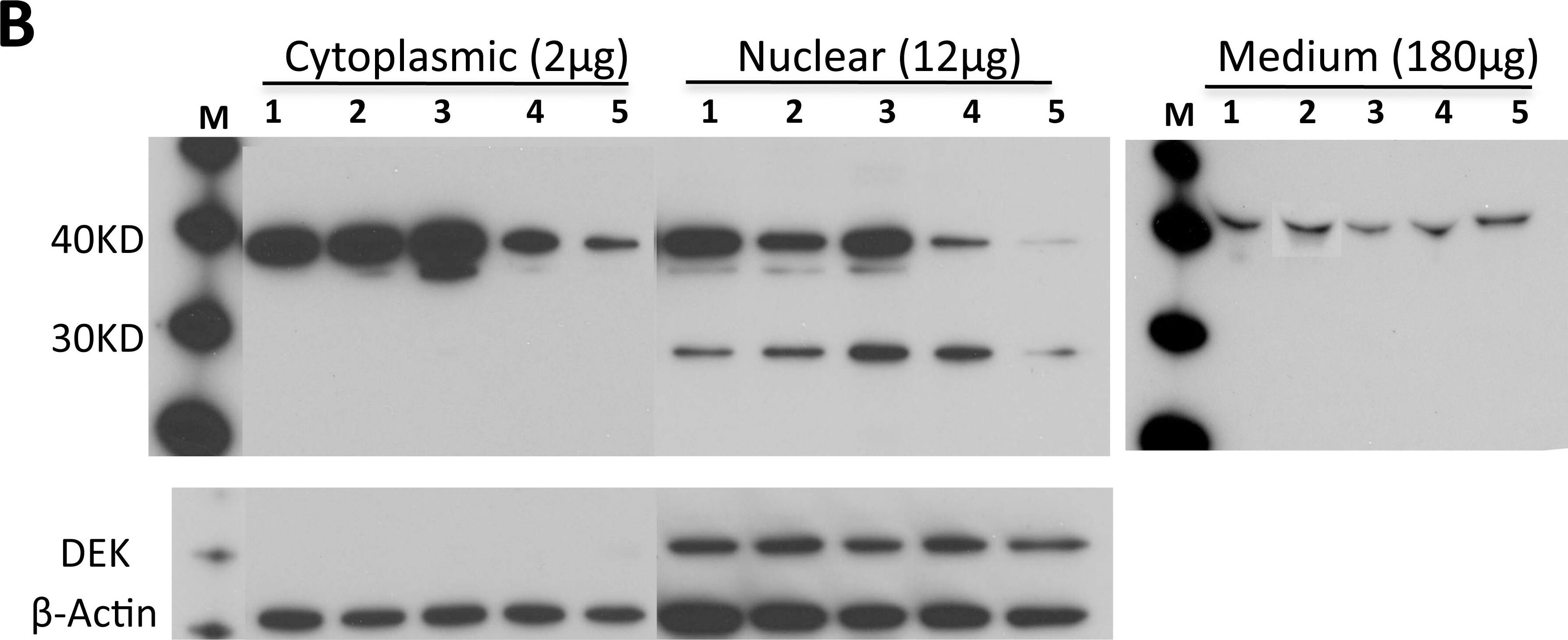Human HTRA1/PRSS11 Antibody
R&D Systems, part of Bio-Techne | Catalog # MAB2916

Key Product Details
Species Reactivity
Validated:
Human
Cited:
Human, Mouse, Rat, Transgenic Mouse
Applications
Validated:
Immunoprecipitation, Western Blot
Cited:
ELISA Detection, IHC/IF, Immunocytochemistry, Immunohistochemistry, Immunoprecipitation, Western Blot
Label
Unconjugated
Antibody Source
Monoclonal Mouse IgG2B Clone # 275615
Product Specifications
Immunogen
Mouse myeloma cell line NS0-derived recombinant human HTRA1/PRSS11
Gln23-Pro480
Accession # Q92743
Gln23-Pro480
Accession # Q92743
Specificity
Detects human HTRA1/PRSS11 in direct ELISAs and Western blots.
Clonality
Monoclonal
Host
Mouse
Isotype
IgG2B
Scientific Data Images for Human HTRA1/PRSS11 Antibody
Detection of Human HTRA1/PRSS11 by Western Blot.
Western blot shows lysates of human placenta tissue. PVDF membrane was probed with 1 µg/mL of Mouse Anti-Human HTRA1/PRSS11 Monoclonal Antibody (Catalog # MAB2916) followed by HRP-conjugated Anti-Mouse IgG Secondary Antibody (Catalog # HAF007). A specific band was detected for HTRA1/PRSS11 at approximately 51 kDa (as indicated). This experiment was conducted under non-reducing conditions and using Immunoblot Buffer Group 1.Detection of Human HTRA1/PRSS11 by Western Blot
HtrA1 Protein Expression in hBC cell lines.Cells (as indicated) were extracted into nuclear (N) and cytoplasmic (C) fractions as described (Materials & Methods), and proteins were analyzed by Immunoblot analyses using the polyclonal antibody against human HtrA1. beta-actin was used as a loading control, and DEK was used to assess the nuclear/cytoplasmic fractionation (DEK is exclusively nuclear). The larger Mr bands seen in the MCF12A and MCF10A/Flp cell lines are consistent with dimers, trimers, etc., although this was not confirmed. MCF10A/Flp is the parental Flp-in cell line which was used to produce the various MCF10A/siRNA or Htra1 cell lines. Results are from a representative experiment. Image collected and cropped by CiteAb from the following publication (https://pubmed.ncbi.nlm.nih.gov/22761798), licensed under a CC-BY license. Not internally tested by R&D Systems.Detection of Human HTRA1/PRSS11 by Western Blot
Characterization of MCF10A cell lines carrying HtrA1 siRNA and overexpression vectors.A random antisense oligonucleotide library was used to identify optimally accessible sites in HtrA1 mRNA. SiRNAs (short hairpin RNAs) were designed to target these sites, and stably transfected cell lines were developed from MCF10A cells (4 independent cell lines, designated MCF10A/siRNA1-4). A control cell line expressing an irrelevant siRNA (designated MCF10A/HPVsh) was also developed. In parallel, we also developed a cell line over-expressing HtrA1 (designated MCF10A/HtrA1). (A). Target sites empirically identified in HtrA1 mRNA. Identified domains within HtrA1 include: SS, signal sequence; IGFBP, IGF binding site; KI, Kazal Type I protease inhibitor domain; Trypsin-like protease domain; PDZ, PDZ binding domain. (B) Immunoblot analysis for HtrA1 protein. Cytoplasmic and nuclear protein fractions were prepared from the developed cell lines (as indicated), and were probed with a polyclonal antibody preparation directed against a region in the trypsin-like protease domain. As is evident, the reductions in HtrA1 protein levels were >90% compared with the various MCF10A and MCF10A/HPVsh cells. Right panel shows HtrA1 in concentrated culture medium. (C) Cells were plated and growth was measured over a 6 day period. Both of the MCF10A cell lines tested (MCF10A/siRNA1 and siRNA4) grew significantly faster than the control cells (p<0.01 at days 4 and 6). Over-expression of HtrA1 in the MCF10A/HtrA1 cells had no effect on cell growth rate. Image collected and cropped by CiteAb from the following publication (https://pubmed.ncbi.nlm.nih.gov/22761798), licensed under a CC-BY license. Not internally tested by R&D Systems.Applications for Human HTRA1/PRSS11 Antibody
Application
Recommended Usage
Immunoprecipitation
25 µg/mL
Sample: Conditioned cell culture medium spiked with Recombinant Human HTRA1/PRSS11, see our available Western blot detection antibodies
Sample: Conditioned cell culture medium spiked with Recombinant Human HTRA1/PRSS11, see our available Western blot detection antibodies
Western Blot
1 µg/mL
Sample: Human placenta tissue under non-reducing conditions only
Sample: Human placenta tissue under non-reducing conditions only
Formulation, Preparation, and Storage
Purification
Protein A or G purified from hybridoma culture supernatant
Reconstitution
Reconstitute at 0.5 mg/mL in sterile PBS. For liquid material, refer to CoA for concentration.
Formulation
Lyophilized from a 0.2 μm filtered solution in PBS with Trehalose. *Small pack size (SP) is supplied either lyophilized or as a 0.2 µm filtered solution in PBS.
Shipping
Lyophilized product is shipped at ambient temperature. Liquid small pack size (-SP) is shipped with polar packs. Upon receipt, store immediately at the temperature recommended below.
Stability & Storage
Use a manual defrost freezer and avoid repeated freeze-thaw cycles.
- 12 months from date of receipt, -20 to -70 °C as supplied.
- 1 month, 2 to 8 °C under sterile conditions after reconstitution.
- 6 months, -20 to -70 °C under sterile conditions after reconstitution.
Background: HTRA1/PRSS11
Long Name
High Temperature Requirement Protein-1
Alternate Names
IGFBP5-protease, PRSS11
Entrez Gene IDs
5654 (Human)
Gene Symbol
HTRA1
UniProt
Additional HTRA1/PRSS11 Products
Product Documents for Human HTRA1/PRSS11 Antibody
Product Specific Notices for Human HTRA1/PRSS11 Antibody
For research use only
